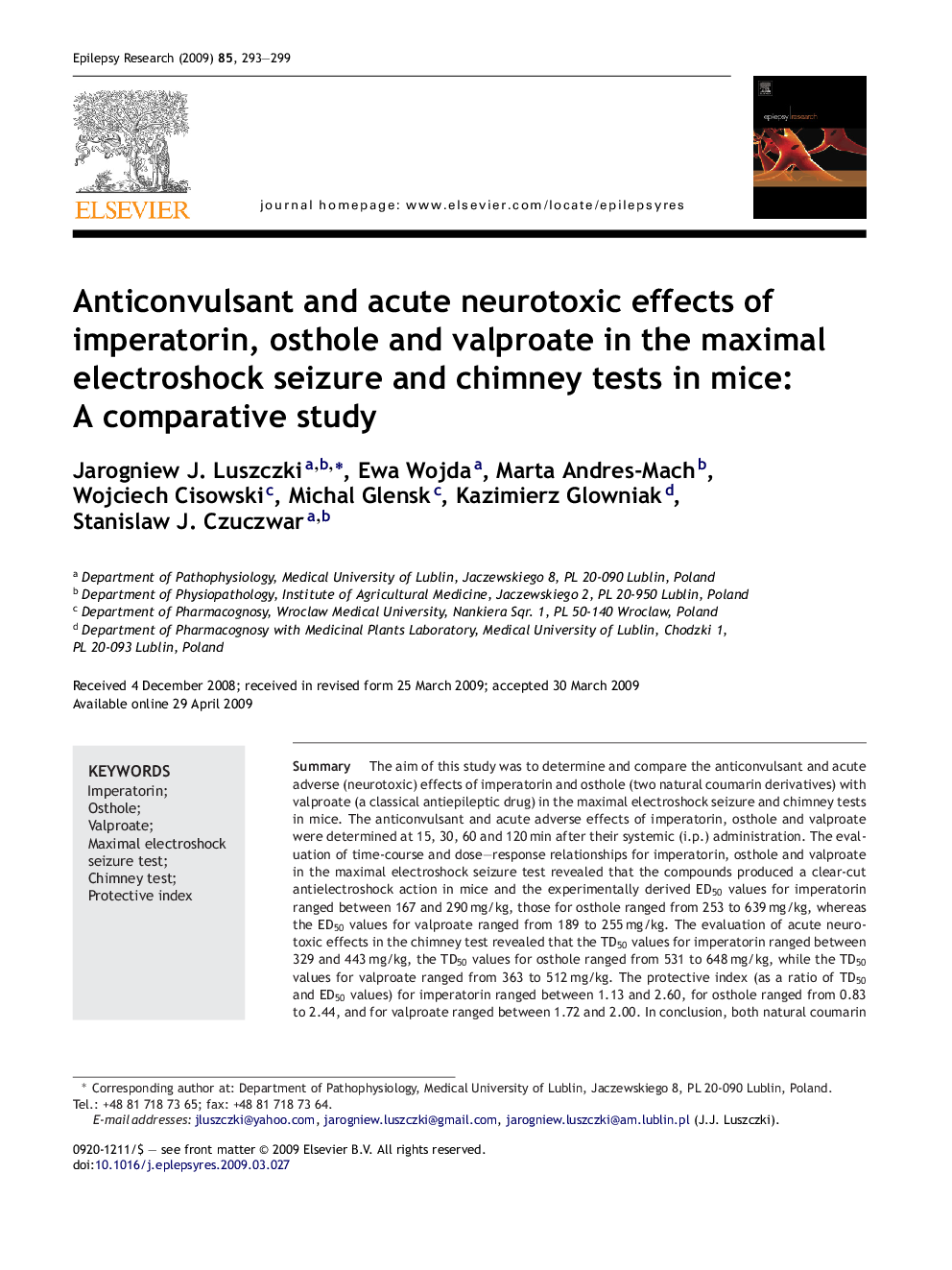| Article ID | Journal | Published Year | Pages | File Type |
|---|---|---|---|---|
| 3052906 | Epilepsy Research | 2009 | 7 Pages |
SummaryThe aim of this study was to determine and compare the anticonvulsant and acute adverse (neurotoxic) effects of imperatorin and osthole (two natural coumarin derivatives) with valproate (a classical antiepileptic drug) in the maximal electroshock seizure and chimney tests in mice. The anticonvulsant and acute adverse effects of imperatorin, osthole and valproate were determined at 15, 30, 60 and 120 min after their systemic (i.p.) administration. The evaluation of time-course and dose–response relationships for imperatorin, osthole and valproate in the maximal electroshock seizure test revealed that the compounds produced a clear-cut antielectroshock action in mice and the experimentally derived ED50 values for imperatorin ranged between 167 and 290 mg/kg, those for osthole ranged from 253 to 639 mg/kg, whereas the ED50 values for valproate ranged from 189 to 255 mg/kg. The evaluation of acute neurotoxic effects in the chimney test revealed that the TD50 values for imperatorin ranged between 329 and 443 mg/kg, the TD50 values for osthole ranged from 531 to 648 mg/kg, while the TD50 values for valproate ranged from 363 to 512 mg/kg. The protective index (as a ratio of TD50 and ED50 values) for imperatorin ranged between 1.13 and 2.60, for osthole ranged from 0.83 to 2.44, and for valproate ranged between 1.72 and 2.00. In conclusion, both natural coumarin derivatives deserve more attention from a preclinical point of view as compounds possessing some potentially favorable activities in terms of suppression of seizures, quite similar to those reported for valproate.
